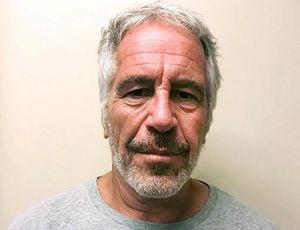On July 28, 2025, a quiet Monday morning at 345 Park Avenue in Midtown Manhattan was shattered by a mass shooting that left four people dead and a fifth critically wounded. The gunman, 27-year-old Shane Tamura, would later be identified as the assailant who stormed the NFL headquarters, targeting the organization in a violent spree that ended with his own death. Now, just two months later, the New York City Medical Examiner’s Office has confirmed what Tamura himself claimed in a chilling three-page suicide note: he had chronic traumatic encephalopathy, or CTE—a brain disease increasingly linked to repeated head trauma in athletes.
According to NBC News and multiple other outlets, the medical examiner’s neuropathological analysis uncovered "unambiguous diagnostic evidence" of low-stage CTE in Tamura’s brain tissue. The official statement from the examiner’s office explained, "CTE may be found in the brains of decedents with a history of repeated exposure to head trauma. The science around this condition continues to evolve, and the physical and mental manifestations of CTE remain under study."
The shooting itself was horrifying in its precision and violence. Tamura killed four people, including NYPD Detective Didarul Islam, Blackstone executive Wesley LePatner, security guard Aland Etienne, and Rudin employee Julia Hyman, before fatally shooting himself inside the Rudin offices. A fifth victim survived but was left in critical condition. According to ABC News, Tamura appeared to deliberately target the NFL headquarters, a detail echoed by New York City Mayor Eric Adams, who said at the time, "Tamura appeared to be targeting the NFL headquarters in the Park Avenue office building."
Investigators searching Tamura’s Las Vegas apartment after the attack found bottles of antipsychotic, anti-inflammatory, and anti-epileptic medications. These discoveries, along with Tamura’s lengthy suicide note, painted a picture of a young man in the throes of severe mental health struggles. In his note, Tamura directly blamed the NFL for his condition, writing that his mental health was destroyed by CTE, and implored doctors to "study my brain." As Police Commissioner Jessica Tisch told reporters, "Tamura left a suicide note blaming his mental health struggles on CTE and specifically blaming the NFL for his condition."
The NFL, for its part, issued a statement acknowledging the tragedy while distancing itself from responsibility. "There is no justification for the horrific acts that took place," the league stated, also referencing the medical examiner’s comments that the science around CTE is still evolving and remains under study. The league’s response reflects a broader debate that has raged for years over football, brain injuries, and corporate accountability.
CTE, or chronic traumatic encephalopathy, has become a household term in recent years, largely due to its association with former professional football players who have suffered repeated blows to the head. But Tamura was not a professional athlete. A viral video surfaced showing him playing on his high school football team, but officials were quick to clarify that he had never played at the college or professional level. This fact, reported by The New York Times and others, highlights a sobering reality: the dangers of repeated head trauma are not confined to the NFL or even to professional sports.
Medical experts say that CTE can only be definitively diagnosed by examining brain tissue after death. The disease is characterized by the buildup of tau protein, which causes progressive degeneration of brain tissue, leading to symptoms like depression, memory loss, impulsivity, and, in some cases, violent behavior. According to the chief medical examiner’s office, Tamura’s brain showed "unambiguous diagnostic evidence" of low-stage CTE, a finding that aligns with the current consensus criteria for the disease.
While the science is still catching up to the headlines, the link between CTE and violent or erratic behavior has been the subject of intense research and debate. The medical examiner’s statement was careful to note that "the physical and mental manifestations of CTE remain under study," and that the field is still evolving. Nonetheless, Tamura’s case has reignited public concern about the risks of head trauma in contact sports and the responsibilities of organizations like the NFL.
In the aftermath of the shooting, law enforcement and city officials have faced tough questions about security, mental health, and the broader societal factors that contribute to such tragedies. Mayor Adams and Police Commissioner Tisch both emphasized the need for continued research into brain injuries and mental health, as well as better support systems for those at risk. As Tisch put it, "Police found bottles of antipsychotic medication in Tamura's Las Vegas apartment after the shooting, along with anti-inflammatory and anti-epileptic drugs." This detail underscores the complexity of Tamura’s mental health history and the challenges of identifying those at risk before tragedy strikes.
The victims of the shooting—Detective Islam, LePatner, Etienne, and Hyman—have been remembered in vigils and memorials across the city. Their families, colleagues, and communities are left searching for answers in the wake of senseless violence. For many, the revelation of Tamura’s CTE diagnosis offers a partial explanation, but not an excuse. As the NFL stated, "There is no justification for the horrific acts that took place."
For the broader public, Tamura’s case is a stark reminder of the hidden dangers that can lurk behind seemingly ordinary lives. The fact that he was not a professional athlete, yet developed a brain disease most commonly associated with elite sports, suggests that the risks of repeated head trauma may be more widespread than previously thought. Experts warn that much more research is needed to understand how CTE develops, who is most at risk, and how its symptoms can be recognized and treated before tragedy occurs.
As the science continues to evolve, so too does the conversation around sports safety, mental health, and corporate responsibility. The NFL’s statement that "the science around CTE continues to evolve" reflects a growing awareness that the league—and society at large—must grapple with the long-term health consequences of contact sports. Meanwhile, families and communities affected by violence like the Midtown shooting are left to pick up the pieces, hoping that greater understanding and accountability might help prevent future tragedies.
In the end, the story of Shane Tamura is not just about one man’s struggle with a devastating brain disease, but about a society wrestling with the costs of its favorite pastimes—and the lives that can be forever changed in their wake.





